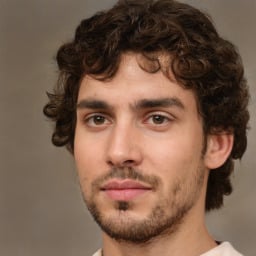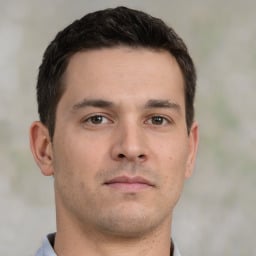Question :
The report enables them to ensure that various physiological principles must take into consideration by the health and social care organisation. For this various task need to be undertaken such as:
- To understand the functioning of the human body
- To facilitate understanding among the relationship between body functioning
- To analyse how routine data collected in health and social care for planning
- To relate routine variations in body structure and functioning to care received by individuals
Answer :
INTRODUCTION
Health and social care provide integrated services facility to the large number of person. These type of services falls under the part of the health care. It covers different aspects related to nutrition, sociology, ethics, biology and law (Aveyard, 2014). The care related services are provided to bring an enhancement in running of human body. It further change for knowing the concepts concentrated to biochemical, physical, bioelectrical and mechanical functions. Heal is more important and essential part of the each and every individual to gain their personal gaols in an effective and efficient manner. This report is based on different tasks which are include functioning and structure of the human body. Relationship between body functioning and many other essential details about physiology and anatomy, it is analysed in this study. Routine measurement which is also determined in this project with aim to identifying the important information related to health and social care. Age may be effected on body structure and functioning which are also determined in this project.
TASK 1
1.1 Major anatomical features of human body
Mainly human body is a mixture of various structures that work together and allow its functioning. Anatomy means to cut apart and this is use as examination of various organs and structure of human body. Physiology is use as that treat the parts of living organism and its various chemical and physical elements (Marshall and Traynor, 2014). Both Anatomy and physiology are related with each other as functions of a human body remain depend on its structure and form. Human body has different level of organisation which enable its structure to work properly. Cells are known as the basic level of human body which is made up of various biomolecules. Group of similar cells is known as tissues and these combine with other tissues that develop organs of an individual. When all these organs work together than it is known as organ system (Bircher and Kuruvilla, 2014). Major human body is a mix of three major systems known as nervous system, cardiovascular and respiratory system. All these can be understood by the following points:
- Nervous system: Brain, nerves, spinal cords and sensory organs are the major parts of which nervous system is made of. This is further divided into various parts known as central nervous system and peripheral nervous system. One of the major function of this is to regulation, coordinate and control with other systems.
- Cardiovascular system: This system of human body is made up of veins, heart, arteries and capillaries. One of the major function of this organ system is to transport nutrients and significant materials across the body (Harriss and Atkinson, 2015). Heart works by pumping blood away from heart through arteries and after that de-oxygenated is come back to the heart through veins.
- Respiratory system: This is known as that path from which air form the environment transfer from nasal, larynx and trachea into the lungs. This organ system work by maintain acid base balance. This is known as one of the most relevant system for survive.
1.2 Interaction of body system to ensure body functions
Large number on interaction take place in entire body of a human. This is very essential for ensure that all parts are functioning properly and grow as well. Homoeostasis control all internal conditions of human body such as blood conditions, temperature and various elements relevant for living system (Barer, 2017). Further, feedback occur in two either positive or negative. In case of positive feedback results in increase in stimulus while in negative body turn off the stimulus response.
Cellular metabolism is known as total number of biochemical reactions that take place within cell. Starts from mouth and ends in small intestine, metabolic activities take place on digestive system. After that these are absorbed through blood stream and intestinal walls. Mainly cellular metabolism are of two types known as anabolism and catabolism and both these are essential for cells to work properly (Allen and et. al., 2014). Anabolism is way that is needed to develop large molecules from smaller molecules. Catabolism is totally different from metabolic way that develop energy and use the same to break down large molecules into small. Interaction in body system take place which support cellular metabolism. Respiratory system allow ventilation of lungs and this help in exchange gas. All this provide energy to human body. Absorption and digestion both are known as the significant nutrients for human body in digestive system. Excretory system contribute in eliminate the waste and circulatory system interact with all these system that support in carry blood.
Growth of hormone is refers to that hormone which is produce by pituitary gland which control protein and that's why it is known as the process of growth. Stimulate growth elements, regeneration in tissues and cell reproduction is known as one of the major role of growth hormone. This is very important for both after and before birth. Growth of hormone has both direct and indirect effects. Direct effects occur in the case when growth hormone bind receptor target various cells such as fat cells. This directly stimulate division and multiplication of specific tissues. Indirect effects are the one in which growth hormone acts by releases insulin and through liver. All this promote amino acid and at the same time allow formation of new proteins in bones and muscle cells. Growth hormone also has some metabolic effects through metabolism of fats and protein. Deficiency in growth hormone results in growth dwarfism.
TASK 2
2.1 Explain normal body response to everyday activities
There are various kind of organ systems of the human body which has potential to function together and thus happen in regular activities (Sarafino and Smith, 2014). Example can be taken up of 25 year old man who is college student and thus during the whole day he will be involved in breathing, eating, elimination along with coordination and movement. As per the scenario, young man can end up eating breakfast, lunch, dinner during the sunlight. Main source of energy for the body is food which can give nutrients to the cells of body which they mainly operates. However, in order to use the food and its nutrients, it has to be mechanically broken down along with breaking down of enzymes in order to absorb the nutrients by digestive system. Both of the processes are being termed as mechanical and chemical digestion.
This document has been composed with the online HTML editor. Use the online visual HTML beautifier will help you a lot while you are working on your articles.
Suggested sample:-
Behavioural Management Principles
Digital Health in relation to Physiotherapy



















